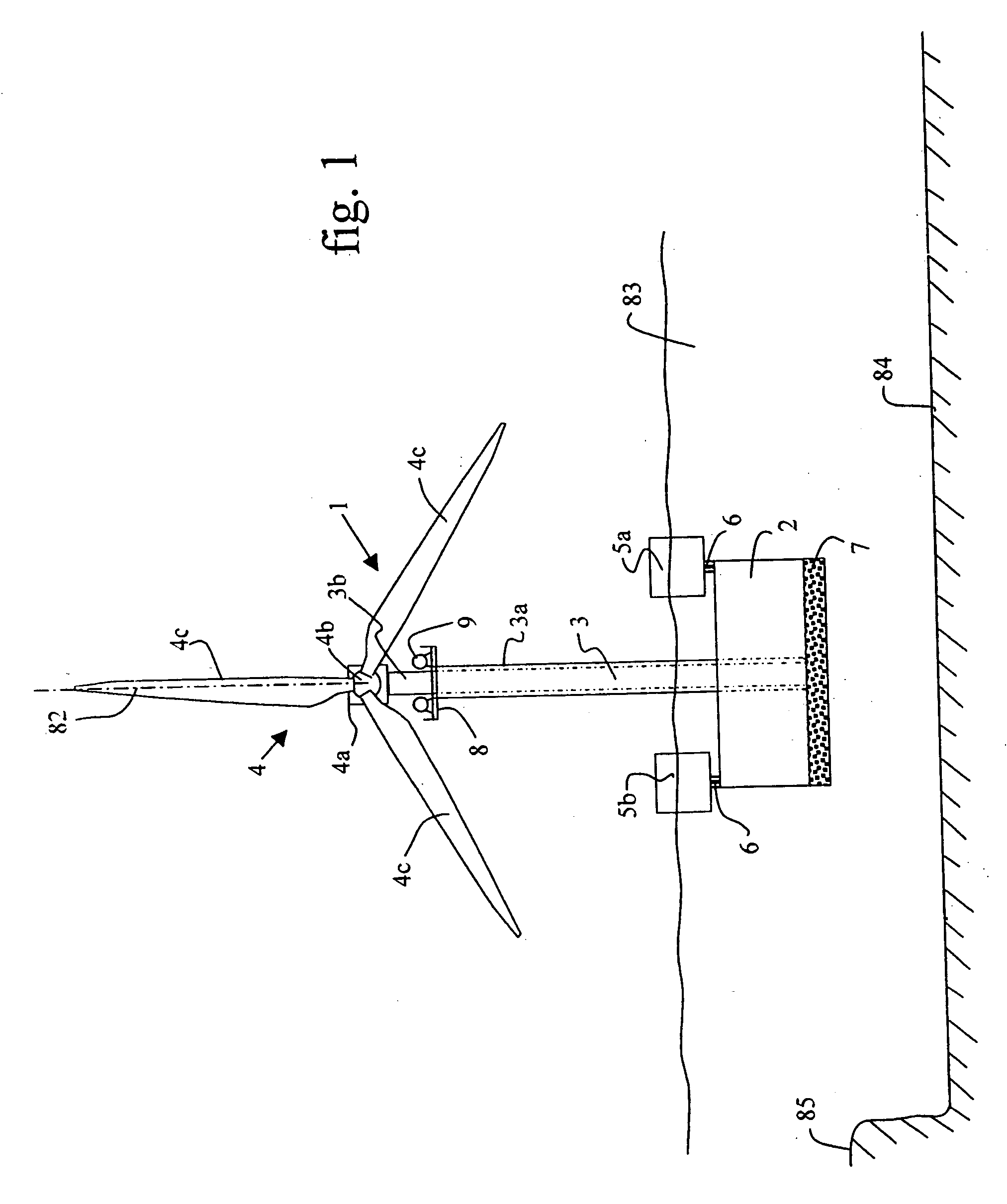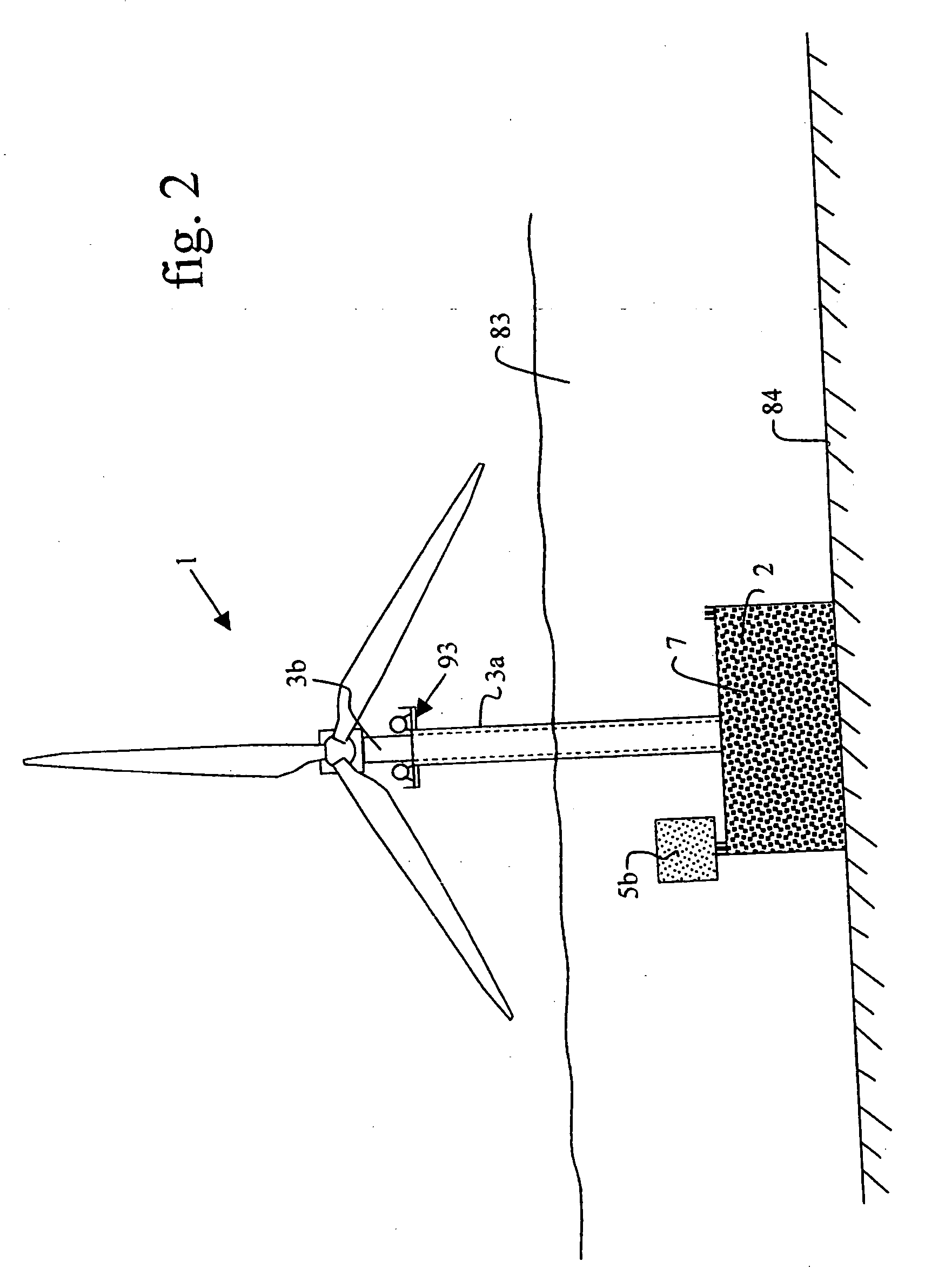Offshore wind turbine and method for making same
a wind generator and offshore technology, applied in wind energy generation, motors, artificial islands, etc., can solve the problems of large hoisting capacity, difficult movement and installation of cranes, and difficulty in building such wind generators
- Summary
- Abstract
- Description
- Claims
- Application Information
AI Technical Summary
Benefits of technology
Problems solved by technology
Method used
Image
Examples
Embodiment Construction
[0051] FIGS. 1 to 4 are side views of an off-shore wind generator 1 while it is being put into place, the wind generator comprising a base 2 and a pylon 3 constituted by a bottom portion 3a received in said base, and a top portion 3b of outside diameter 80 smaller than the inside diameter 81 (FIG. 4) of the bottom portion 3a. The two tubular portions 3a and 3b of the pylon can slide along their substantially vertical common longitudinal axis 82 by means of a guide system similar to that shown in FIGS. 5 and 6. The telescopic pylon is shown in its retracted position in FIGS. 1, 2, and 8. At the top of the top portion 3b of the pylon, there is installed the active portion 4 of the wind generator comprising an electricity generator 4a secured to a wind turbine constituted by a shaft 4b that is rotatable about a horizontal axis and that supports three blades 4c.
[0052] Stability of the wind generator while it is being towed at sea and put into place on its production site constitutes the...
PUM
 Login to View More
Login to View More Abstract
Description
Claims
Application Information
 Login to View More
Login to View More - R&D
- Intellectual Property
- Life Sciences
- Materials
- Tech Scout
- Unparalleled Data Quality
- Higher Quality Content
- 60% Fewer Hallucinations
Browse by: Latest US Patents, China's latest patents, Technical Efficacy Thesaurus, Application Domain, Technology Topic, Popular Technical Reports.
© 2025 PatSnap. All rights reserved.Legal|Privacy policy|Modern Slavery Act Transparency Statement|Sitemap|About US| Contact US: help@patsnap.com



